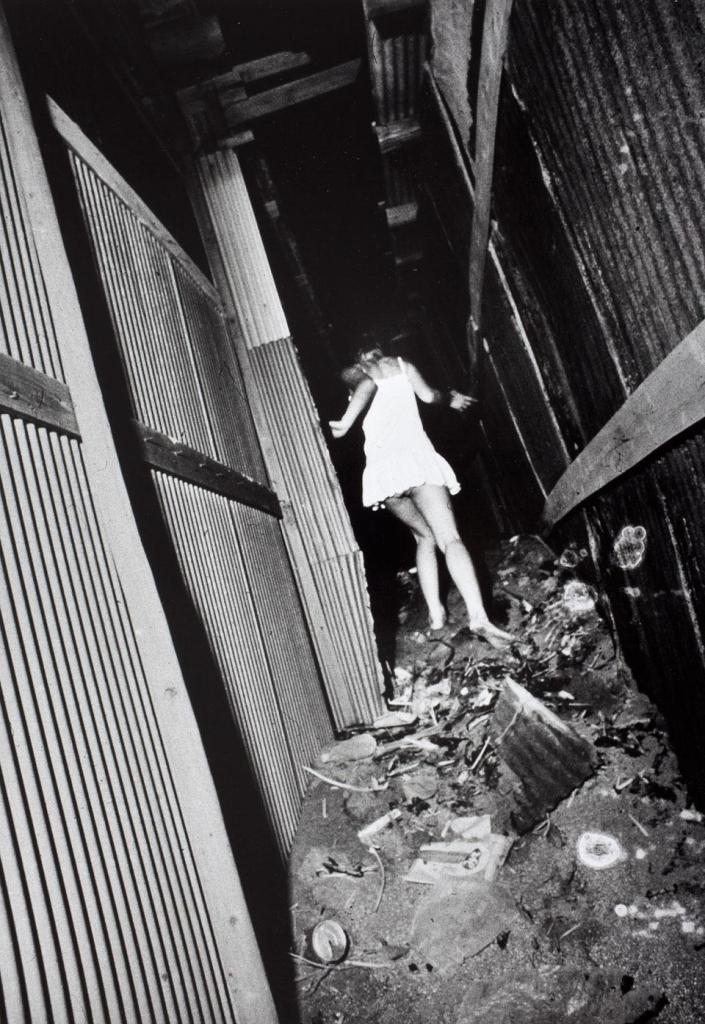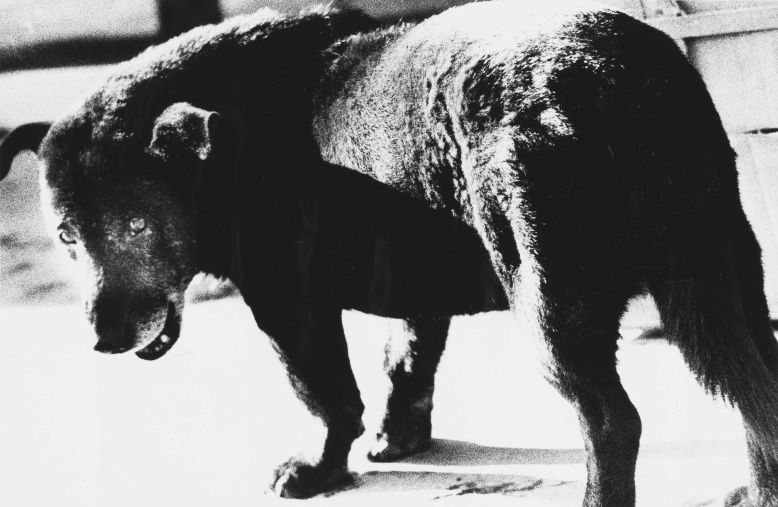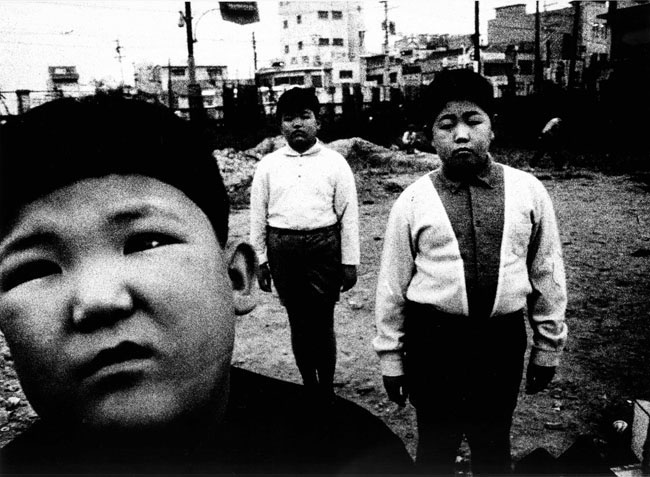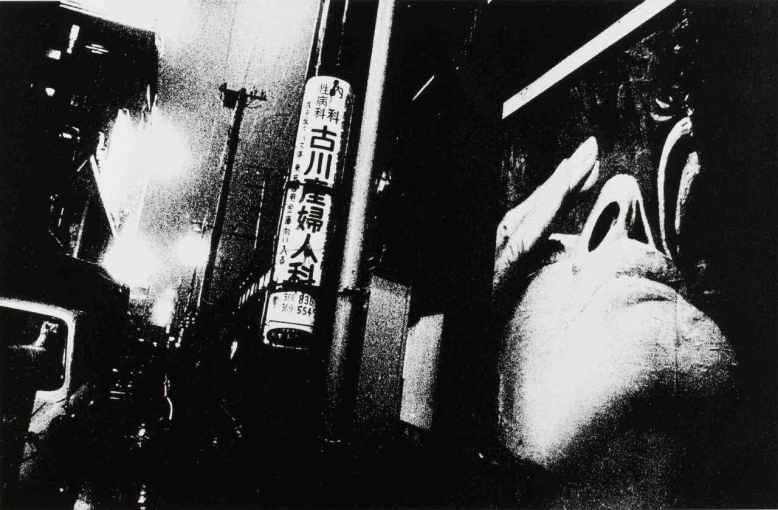Guiding you through the streets of Japan with his compact camera, as if an ecstatic tour guide, eager to reveal the secrets of their favoured city, Daido Moriyama is a prime example of the dynamic process, closely related to street photography and my own project. His eclectic collection of images encapsulate the post-war cities of Japan, it’s animated appearance, heightened exuberance and environmentally proposed juxtapositions. He captures moments of melancholic bliss within an everyday environment ripe with bleak and defunct imperfections. This aesthetic is a primary example of the practice of Wabi-Sabi, the Japanese art of finding beauty in defection, founded by tea master Sen no Rikyu in the 1500’s.
Moriyama, born 1938, draws inspiration from childhood memories of the area he grew up in. Raised in Urawa, a town located just outside of Tokyo, he uses pre-adolescent recollections in an upsurge of reminiscence-inspired detail, so intently displayed in his melancholic depictions of Japanese city life and it’s captivating social landscape. Working with a compact camera, not technologically advanced to say the least, he is able to maintain a certain level of secrecy, steering clear from any awkward implications or expressions of discomfort, frequently evident with the use of a large camera. Continuing his process in post-production and creating his own prints Moriyama is able to intensify the aesthetic which is all so relative to the consequences of his images.
The methodology behind this celebrated artist’s creations, and the way in which he photographs his subject has really helped me gain a wider understanding of street photography, it’s diverse methods of process, and its ever-expansive theoretical parameters. Moriyama is a flåneur, he paces the streets in search of a photographic opportunity. Walking with speed is a signature style for himself and the practice is fundamental to the enraptured viewing experience. This notion had derived from the nomadic adventures described in Jack Kerouac’s literary masterpiece On the Road and was a key source of inspiration for Moriyama, clearly reflected by his energetic and on-the-move approach. The book is also referenced in his 2011 solo exhibition On the Road, housed at the National Museum of Art, Osaka.
Eugene Atget and Weegee are also said to have influenced his artistic mindset, both representing the urban environment within a process tangible to his design. This is superbly appropriated by himself through an evident element of receptively sharp presentness, touching on elements of discovery within his unpredictable environment. Highlighting, yet again, his remarkably observant search for a perfect moment, covertly poised with camera in hand, primed for any photogenic juncture offered by his ever-changing, dynamic surroundings.
Moriyama stated that his true interest in photography is photobooks, he is a keen creator of photobooks and has over 150 books as solo works or through collaboration. Particularly noticeable when looking though his gloss print books is the harsh juxtaposition of light and dark really emphasised by the stark contrast. There is also a gritty layer of noise emphasising the contrast further, working with the sense of motion to create a stylised and signature aesthetic for Moriyama. This signatures seems to induce a darker twist to the imagery also revealed through the urbanised physicality of the landscape and subjects.
As he reaches the age of 77 he is still capable of producing work with just the same visual impact as his work in the 60’s and 70’s. He has held over 100 exhibitions packed with interesting content so of which include Daido Moriyama: Now and Now, Steven Kasher Gallery, New York, 2013, Shinjuku,Taka Ishii Gallery, Tokyo, 2002 and Remix, Galeris Kamel Mennour, Paris, 2004, all stunning examples of his work. His astonishing collection of publications and mass of visually intriguing, sharp images following the path of Wabi-Sabi are a remarkable achievement for Daido Moriyama and one that will see his named celebrated for years to come.
References:
Lawrence, R, G, Coca, J, “The Wabi-Sabi house: the Japanese art of imperfect beauty”, 2004, Clarkson/Potter, New York
Lawrence, R, G, “Wabi-sabi: finding the beauty and peace in ordinary things”, Mother Earth News Journal, 2011, Iss: 244, p.50
Moriyama, D, “Shinjuku 19XX-20XX” 2005, Hatje Cantz
Moriyama, D, “Remix”, 2004, Kamel Mennour, Paris
Shute, S, “Jack Kerouac: On the Road Overview”, 2002, Cambridge: Proquest Information and Learning Company
Steven Kasher Gallery, “Daido Moriyama”, 2015 [Viewed 25 Feb 2015]
Available at: www.stevenkasher.com/artist/Daido_Moriyama/biography/
Tate Online, “Daido Moriyama: In Pictures”, 2012, Tate Youtube Channel [Viewed 25 Feb 2015]
Available at: www.youtube.com/watch?v=foWAs3V_lkg



